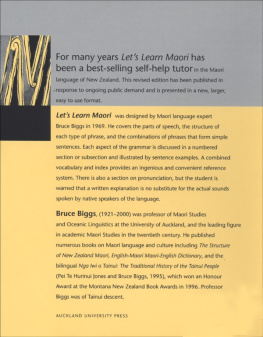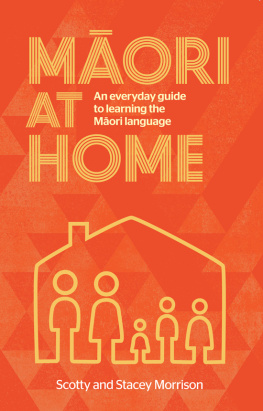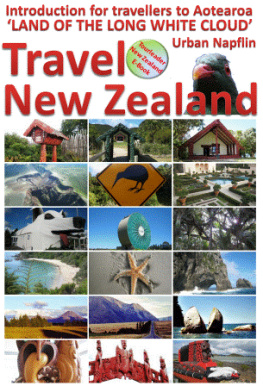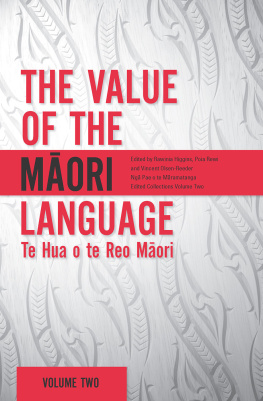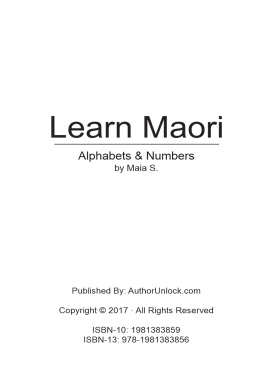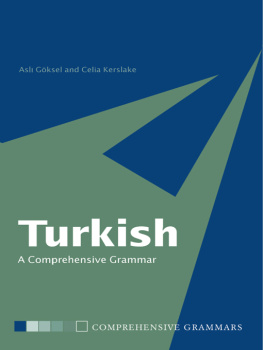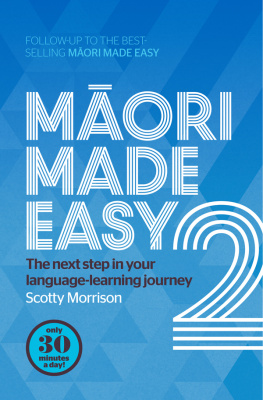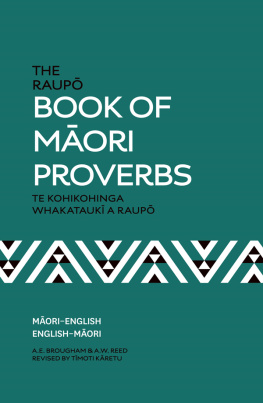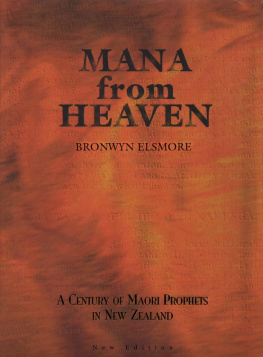lets learn
Maori Also by Bruce Biggs: Maori MarriageThe Structure of New Zealand MaaoriEnglish-Maori DictionarySelected Readings in Maori (with P. Hohepa and S. M. Mead)Selected Readings in Maori Literature (with Chris Lane and Helen Cullen)Complete English-Maori DictionaryEnglish-Maori Maori-English DictionaryNga Iwi o Tainui: The Traditional History of the Tainui People (ed.)Cook Islands Maori Dictionary (ed.)He Whiriwhiringa: Selected Readings in Maori (ed.)
lets learn
Maori
A Guide to the Study of the Maori LanguageBRUCE BIGGS To my son John Matengaro who wants to study Maori First published by Bruce Biggs 1969 Revised edition 1973 Reprinted 1974, 1986, 1989, 1991, 1992, 1996 Published 1998 by Auckland University Press
University of Auckland Private Bag 92019
Auckland 1142
www.press.auckland.ac.nz
Reprinted 2001, 2006, 2010
This ebook edition 2013 Bruce Biggs 1969, 1973, 1998 This book is copyright. Apart from fair dealing for the purpose of private study, research, criticism, or review, permitted under the Copyright Act, no part may be reproduced by any process without the prior permission of Auckland University Press. eISBN 978 1 86940 642 4
Contents
Introduction
Lets Learn Maori is a self-help tutor designed to facilitate study of the Polynesian language still spoken natively in those areas of New Zealand where Maoris form a significant proportion of the population.
It should be used in conjunction with Williamss Dictionary of the Maori Language and English-Maori Maori-English Dictionary by the present author. The set of cassettes specially planned to accompany this tutor, and containing most of the sentence examples from it, should also be used if at all possible. For those without access to the recordings a brief pronunciation guide is appended; but it should be realised that any written guide to pronunciation runs a poor second to the voice of a native speaker. It is not claimed that Lets Learn Maori will make learning easy. Any language is a highly complicated symbolic system in which reasonable competence is acquired only after prolonged and serious study. No books, or records, or combination of both will alter that.
It is claimed however that the analysis of Maori presented here has proved to be a helpful learning and teaching aid over the past twenty years, especially to those who incline towards a systematic rather than an anecdotal approach. The tutor endeavours to present a complete description of the structure of simple sentences together with a few more complex sentence types. It emphasises and explains grammatical features which differ from English and supplies sentence examples for each structure it describes. Extensive cross-referencing is included and a combined index, vocabulary and glossary of grammatical terms is provided. The recordings provide an oral-aural tutor matched to the written exposition. Used in conjunction the tutor and recordings should enable the student to reach a reasonable standard in the four language skills, reading, writing, speaking, and hearing with understanding.
Maori, like all Polynesian languages, has phonemically distinctive vowel length, and a great many words are distinguished solely by pronouncing a given vowel as short or long. The conventional orthography, devised by English-speaking missionaries, failed to take this into account. Long vowels were not distinguished from short vowels, and reading involved a good deal of guesswork. It is now generally recognised that it is essential to mark vowel length by some method if such meanings as parrot, red-hot, clothing (all written kaka in the conventional orthography) are to be distinguished. Williamss Maori Dictionary, in citation forms only, marks phonemically long vowels by means of a macron, thus kk parrot, kak red-hot, kaka clothing. In Lets Learn Maori, and in English-Maori Maori-English Dictionary, all long vowels are doubled, thus kaakaa parrot, kakaa red-hot, kaka clothing.
The doubling of the vowel means simply that it is lengthened. No rearticulation of the vowel is indicated. Reading practice in the double-vowel orthography used in the tutor may be obtained with He Whiriwhiringa: Selected Readings in Maori (AUP, 1997), a collection chosen by Patrick W. Hohepa, Sidney M. Mead, and the present author. Aural-oral competence should be improved by taking every opportunity to hear spoken Maori, and in turn, to speak Maori.
Tape-recorders are a boon in this respect, enabling one to build up a collection of spoken material, and to check ones own competence in speaking. The text of the tutor is arranged in 54 sections, most of which have subsections, or even sub-subsections. The sections are numbered in digit figures, subsections numbers rather than page numbers. The combined index and vocabulary contains glosses for all Maori words used in the tutor, as well as full and detailed indexing of grammatical and phonological points covered. It should be understood that the glosses of Maori words given in the index are not intended to cover all, or even the greater part, of the meaning of such words. Williamss Maori Dictionary should be consulted for complete information.
All Maori words are printed in italic type. The only exception to this rule concerns the use in English text of Maori words which are generally recognised as being part of the vocabulary of New Zealand English. Such words, Maori for example, are spelt conventionally, and do not show the quantity of vowels. The same word would appear in Maori text as Maaori. English text is printed in Roman type. Te Tangata the man is a nominal phrase.
1.1.1 The phrase as a pause unit of speech
(The examples in this section may be heard on Track 2 of the recordings.) The phrase, not the word, is the unit of Maori speech which must be emphasised in learning. It is the natural grammatical unit of the language, and even more importantly, it is the natural pause unit of speech. Every sentence in Maori consists of one or more phrases. After every phrase it is permissible to pause briefly. On the other hand it is incorrect to pause after each word within a phrase. To a native speaker of Maori the pause points come naturally.
For our purposes, however, it will be helpful if phrases are marked off by commas, thus: Haere mai, ki te whare. Come to the house. Ka pai, te whare nei. This house is good. Each phrase is said as a single intonation contour, the voice rising to a point of intensity which is called the phrase stress. The position of the phrase stress will vary from phrase to phrase, and it may shift position in the same phrase, according to that phrases position in the sentence.
Rules to determine the position of phrase stress are given in section examples phrase stress is marked by an acute accent. Elsewhere an appropriate positioning of phrase stress may be determined by listening carefully to the recording of the sentence concerned. Haere mi, ki te whre. Come to the house. Ka pai, te whare nei. Teenaa koe, Raapata. Teenaa koe, Raapata.
Good-day friend. Ki hea, too kainga? Where is your home? Kei Aakarna, tooku kainga
Next page
